We are excited to present a new release of Verge3D for Blender! Version 3.8 brings augmented reality to iOS via USDZ, Eevee’s native ambient occlusion, a revisited approach to building 3D user interfaces, planar reflections with light probes, alpha hashed transparency, new and upgraded Blender constraints, new and improved Puzzles, and various optimizations.
Augmented Reality on iOS via USDZ
At the moment, the browser WebXR technology is only available in Chrome for Android, with Apple still working on bringing it to mobile Safari. However, Apple also offers its own way to web-based AR using Pixar Universal Scene Description (USD) format, even if lacks interactivity of WebXR.
In this update we managed to implement a run-time exporter to compressed .usdz format with Puzzles.

As a corollary to that, it is now possible to create AR content for iOS thanks to the following simple procedure: first, export to USDZ, and then, replace the link for your “Enter AR” button.

For best results, we recommend using glTF-compatible materials. We have updated our Augmented Reality example to work on iOS. Check it out on your iPhone or iPad: link.
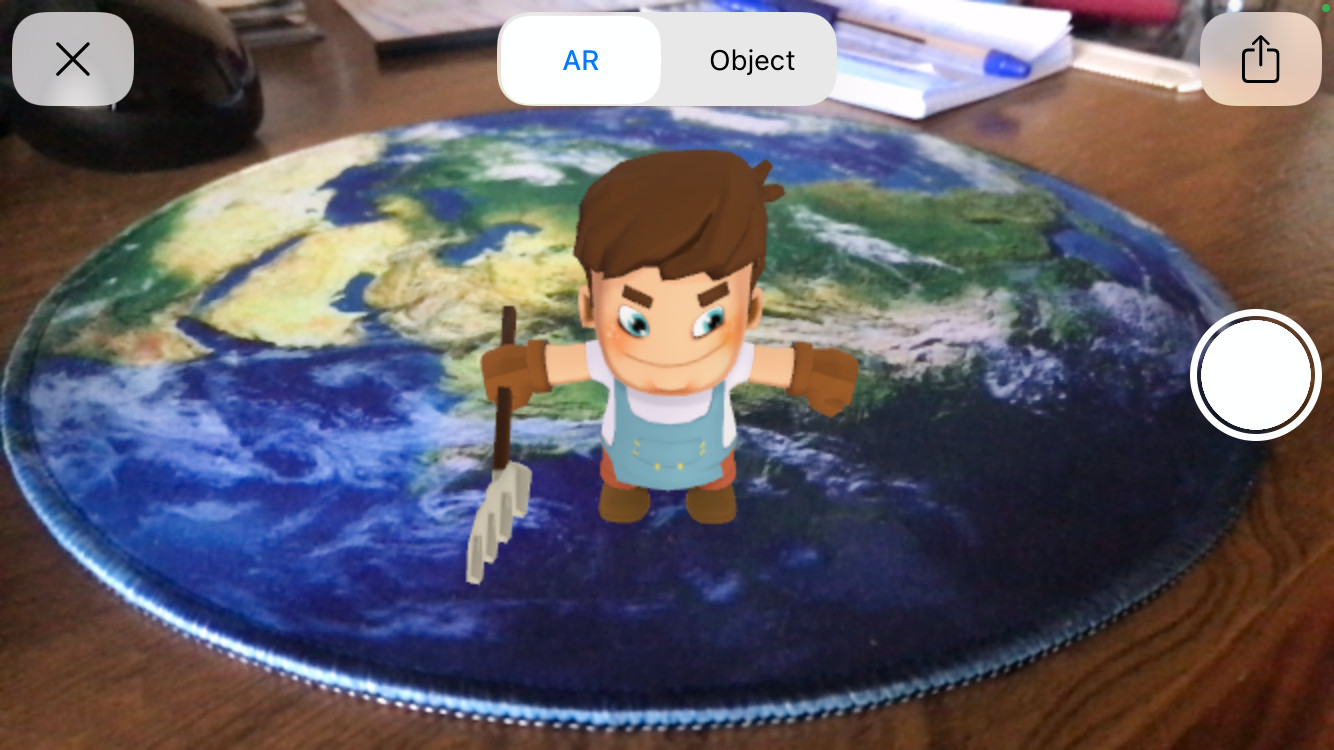
This Apple technology is rather limited compared to WebXR standard (which is currently under development for Safari). There is no animation, swapping model parts, etc. However, you can still change the materials, textures or colors in run time.
New Ambient Occlusion
You can now use Eevee’s dynamic ambient occlusion which in turn is based on the Ground Truth Ambient Occlusion (GTAO) technique.
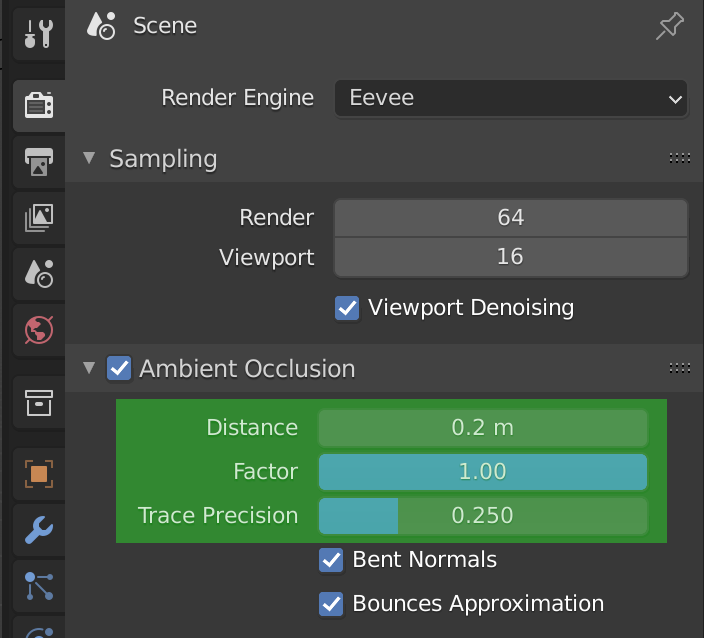
For now, Distance, Factor and Trace Precision settings are supported. We recommend to disable the other two checkboxes for better consistency.
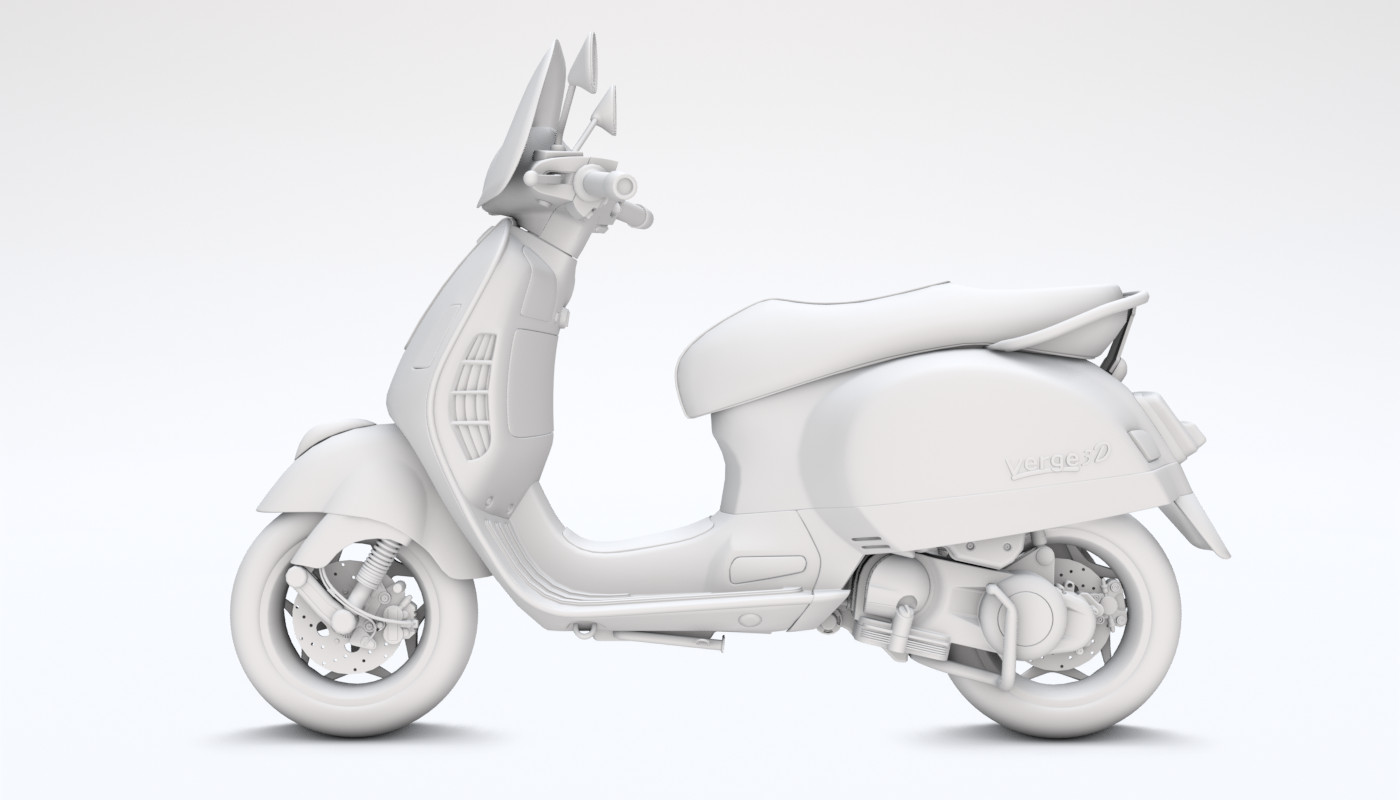
The new ambient occlusion turns out to be much better than the effect previously provided by the SSAO puzzle – and it can be previewed in Blender viewport! As such, we decided to remove the old SSAO effect from the engine. So, there is no more SSAO puzzle available for adding – yet any SSAO puzzles in old scenarios won’t disappear, but invoke the new GTAO-based technique instead.
3D User Interfaces Revisited
The early Verge3D versions suggested using camera-parented 3D objects for buttons, panels, sliders or text labels. After we introduced the HTML Puzzles, we switched to recommending the web-based approach to building UI/UX (with third-party tools such as Webflow). Now has come the time to revisit 3D user interfaces, as we are bringing 3 game-changing features to Verge3D.
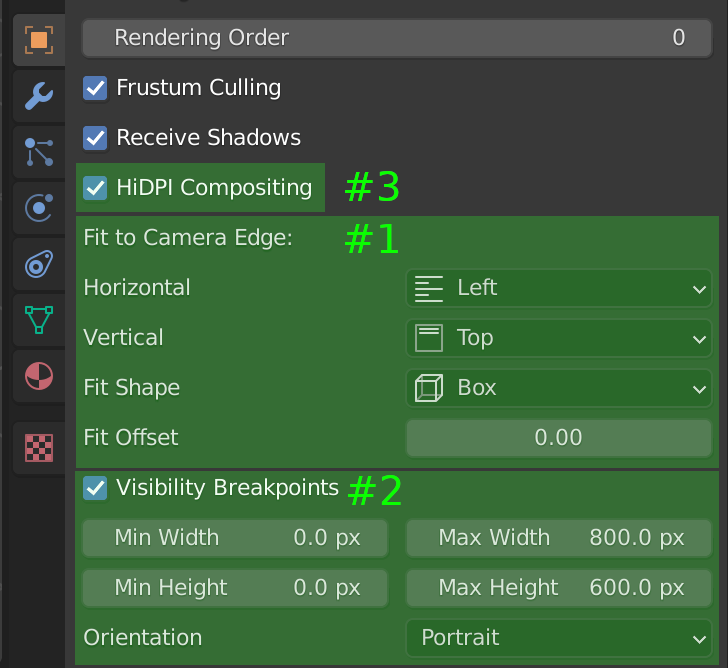
Feature #1: Sticking to the Edge
The first feature is the possibility to stick 3D objects to the viewport edge. The newly introduced setting Fit to Camera Edge, which becomes visible after you parent the object to the camera, does precisely that. It offers 4 parameters – Horizontal, Vertical, Fit Shape, and Fit Offset – using which you attach your panels or texts where you want whem to be, regardless of screen resolution or device.
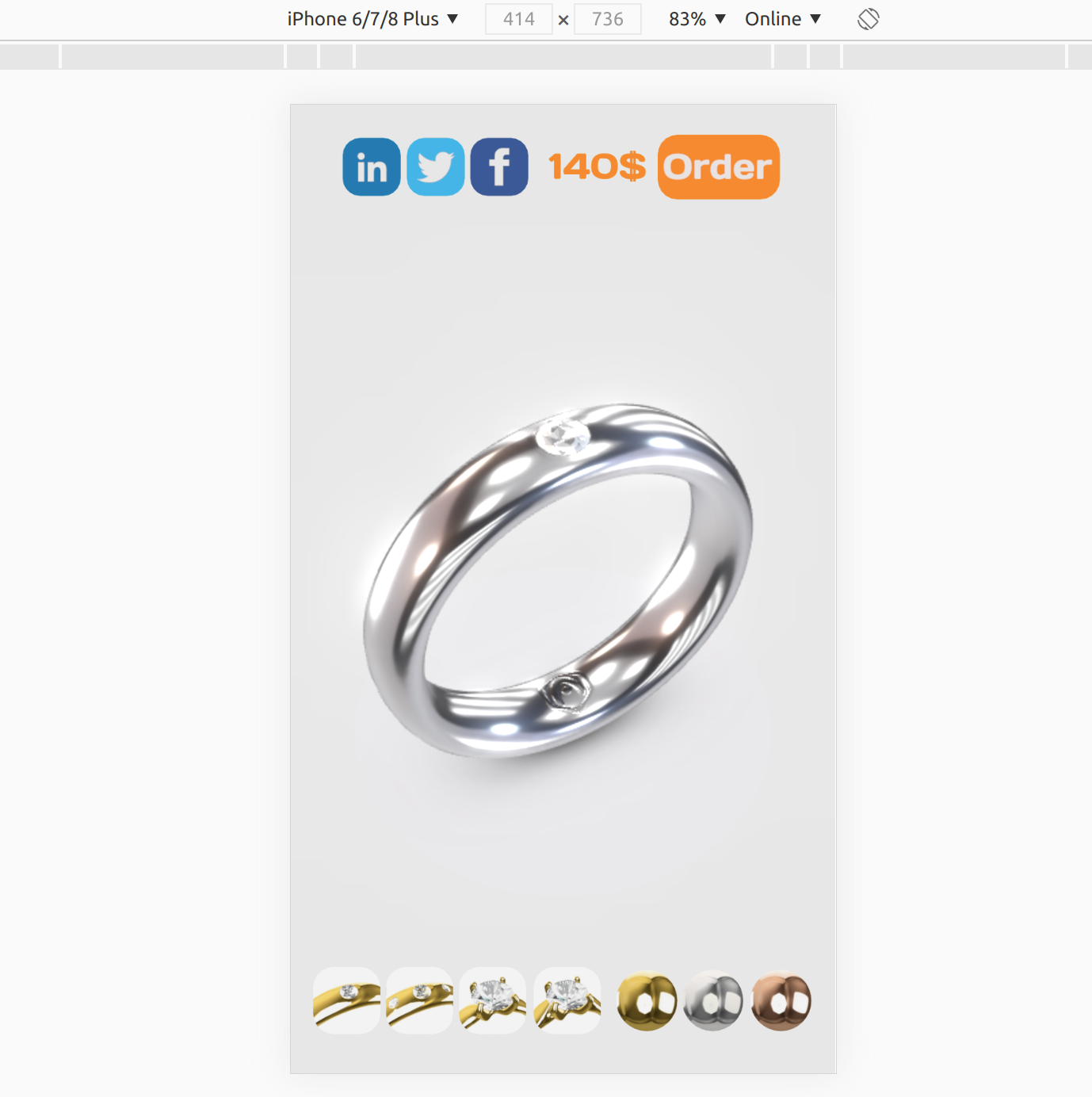
Feature #2: Visibility Breakpoints
The second feature is Visibility Breakpoints. Similar to CSS breakpoints, they allow you to display different sets of objects for different screen resolutions or mobile device orientations (landscape/portrait). Similarly, it can be used to re-arrange the UI as well.
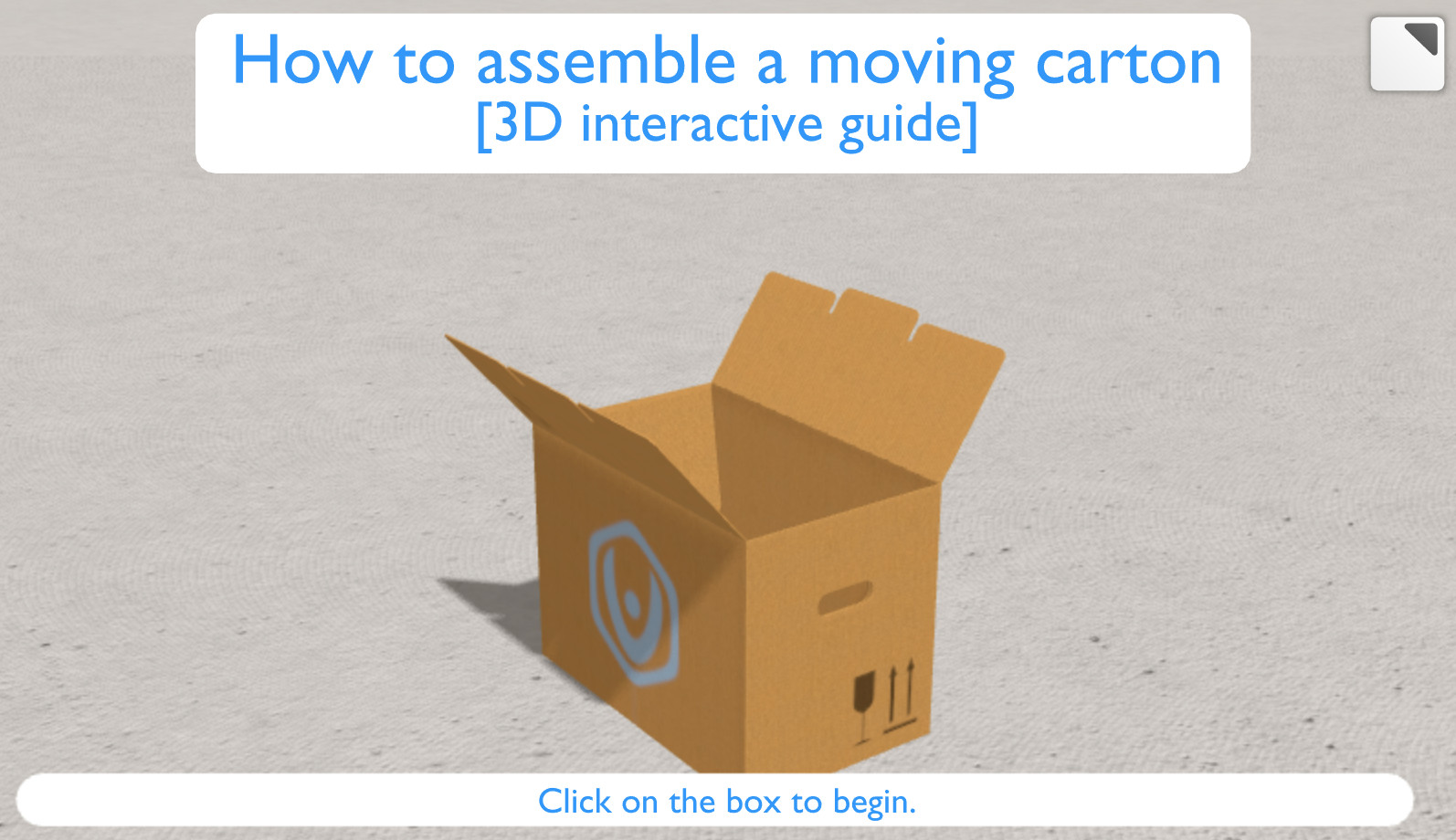
Feature #3: HiDPI Compositing
The third feature, which you might find helpful for building your UI, is HiDPI Compositing. It allows you to render an object (including its children) with a separate high-resolution render pass. Thus, you can significantly improve the quality on HiDPI screens (Retina displays and most mobile devices). This might be especially important when rendering Text objects, or any other elements you need to be sharp and precise.
We recommend using it with a simple shader (such as Emission), or for small objects, so that to not kill the performance.
Demos
We have improved our older demo applications – E-learning, and Ring – to use the Fit to Camera Edge and the HiDPI Compositing for UI objects. They now look much sharper indeed!
Rationale for 3D UI
Finally, why/when use 3D for user interfaces? Definitely, this approach is more “native” to the 3D artist than using HTML/CSS, and does not require external tools. But there is more in it: since the UI elements are genuine 3D objects, you can apply shaders, lighting, animation, morphing – you name it – making them truly interactive and seamlessly integrated into the scene. Potentially, this allows for effects much more engaging and interesting compared to the HTML/CSS-based approach.
Upgraded Light Probes
In the 3.7 release, we first introduced light probes with Reflection Cubemap as the only suppported class. From now on, you can use light probes of Reflection Plane class, for which we supported all the settings offered by Blender.
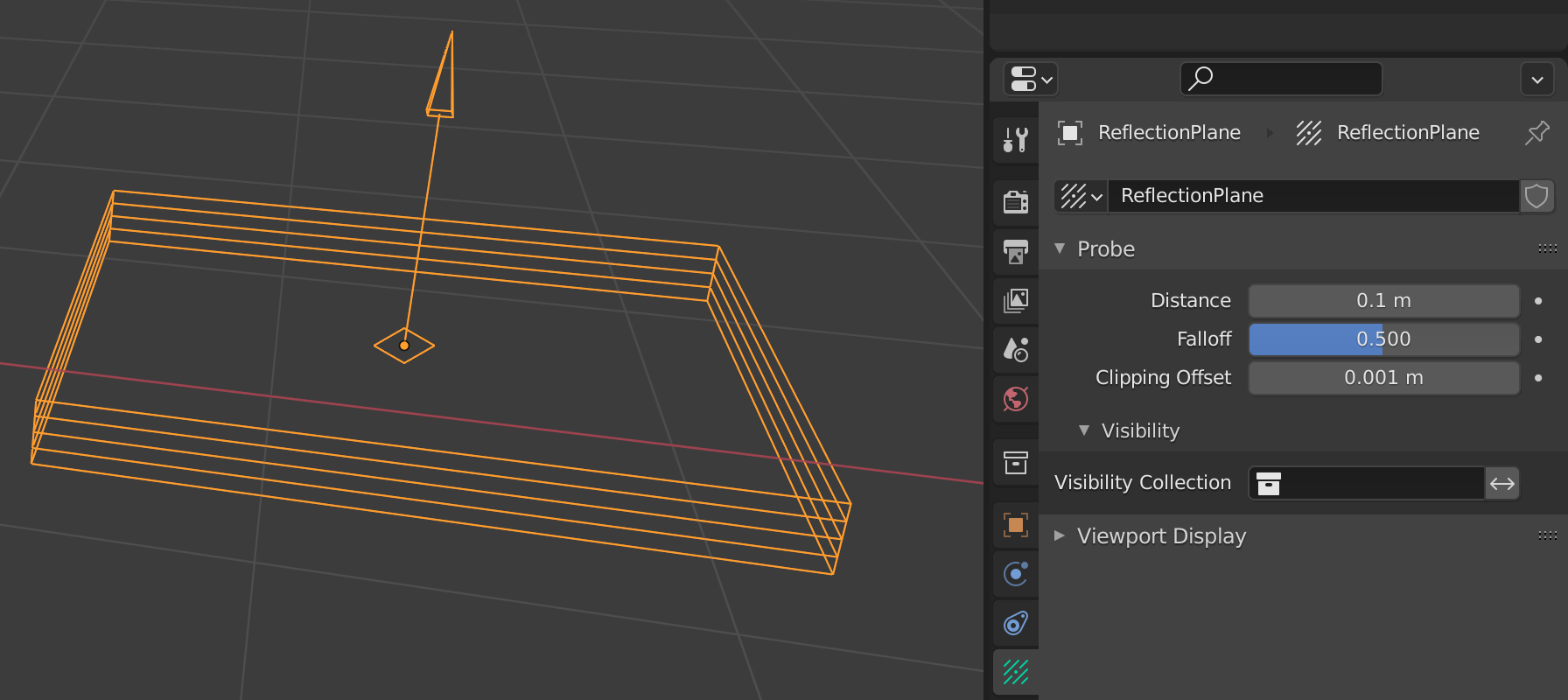
As a result, you can now implement real-time mirrors or floor reflections, for which you can add normal mapping too! See how it works in the updated Load Unload demo.
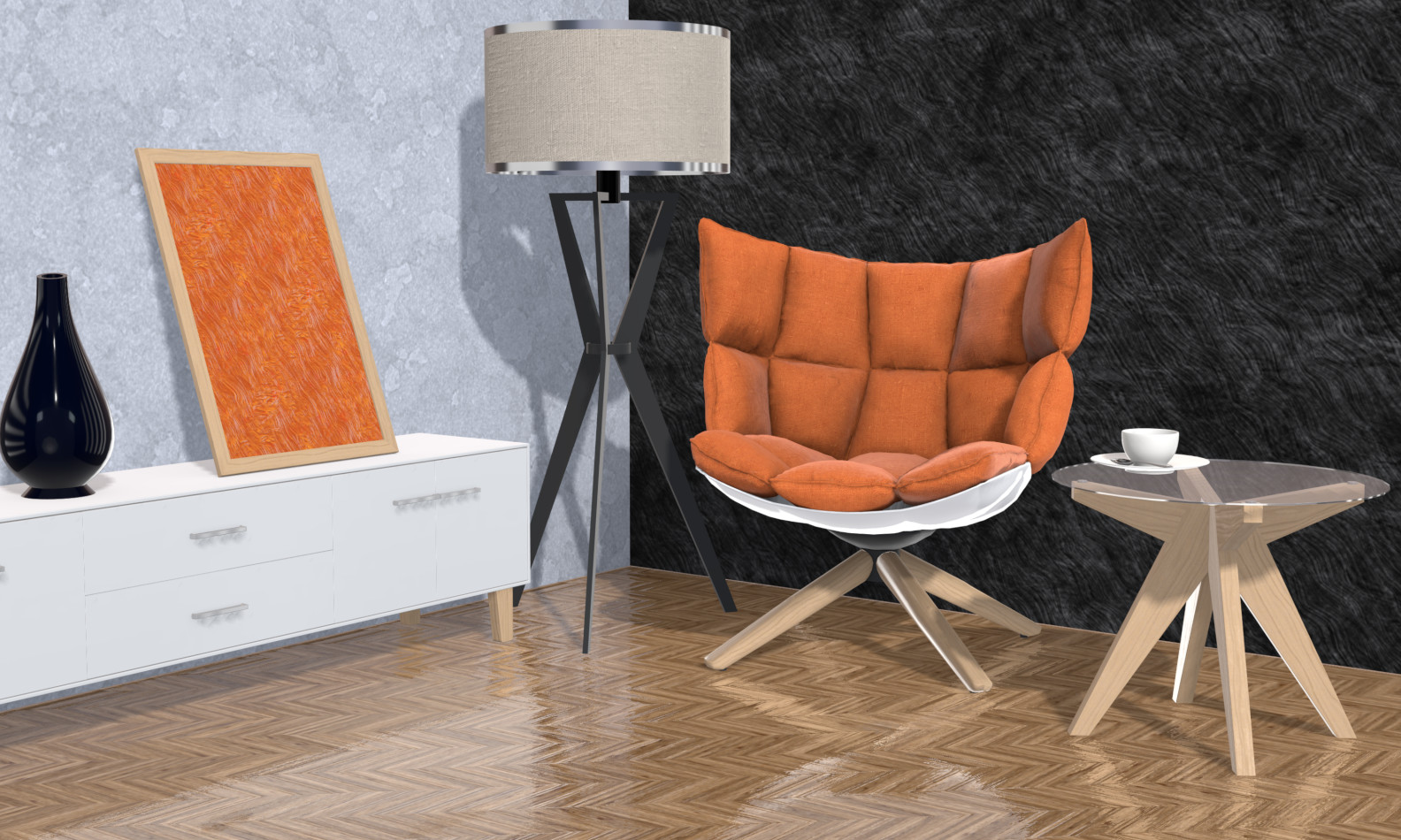
Also, the light probes feature obtained a new option – Custom Influence.
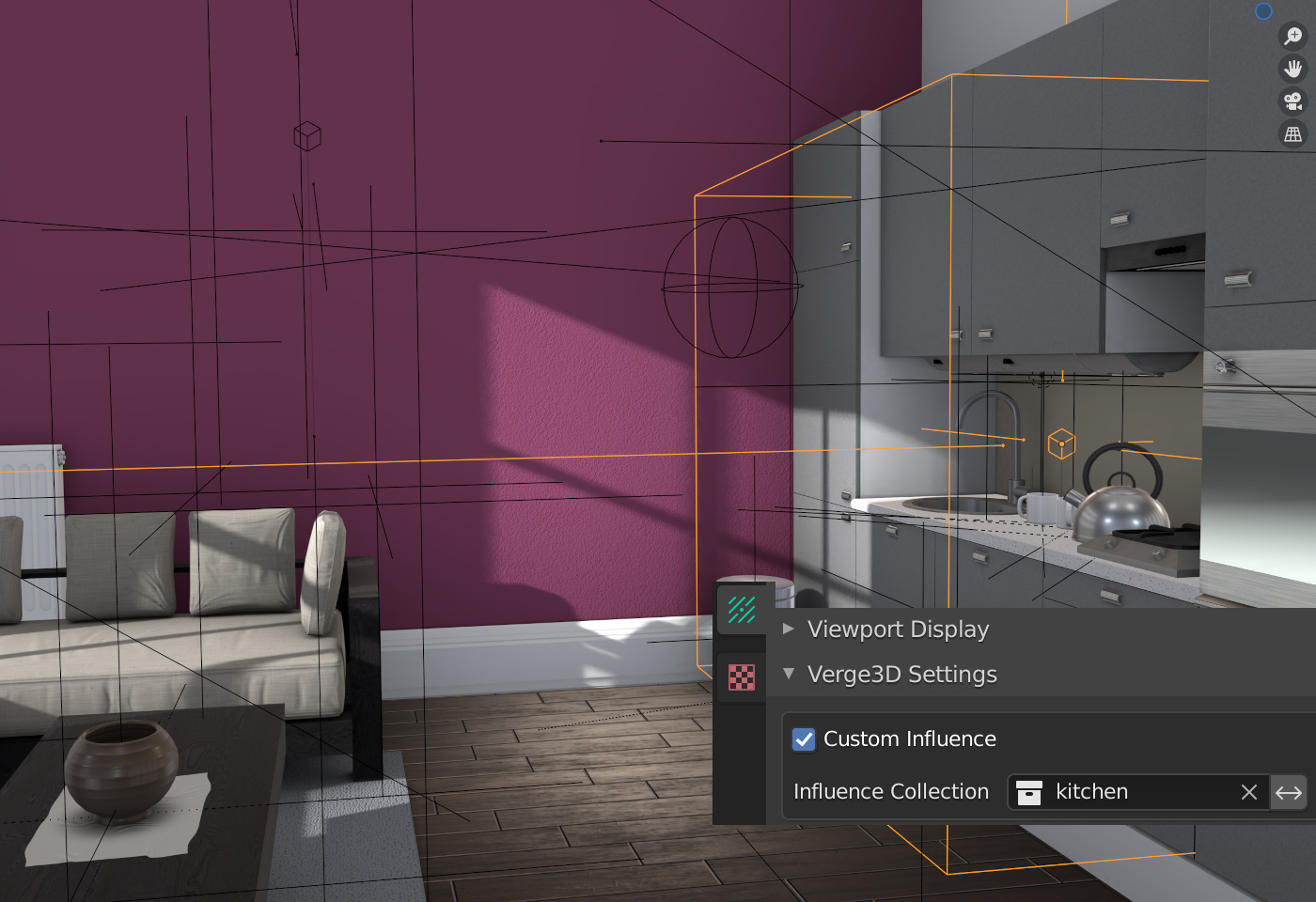
Using this option, you can distinguish what objects a light probe will affect, thus making the final render even more realistic (especially noticeable when using many overlapping light probes).
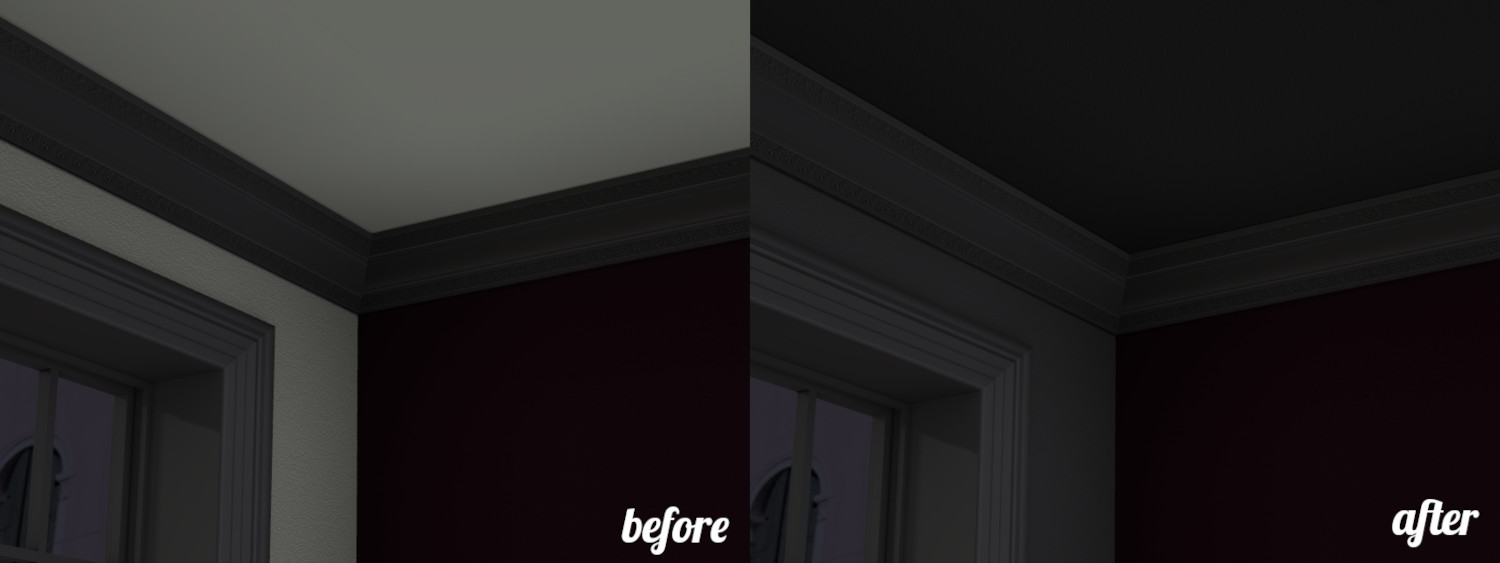
We used this feature to further improve the previously introduced Global Illumination demo. On the screenshot above you can see that the local lamp from kitchen no longer affects the ceiling.
Alpha Hashed Transparency
We supported the so called Alpha Hashed transparency. This feature allows you to get rid of triangle sorting artifacts thus achieving order-independent rendering for transparency. This type of transparency will only work when MSAA is enabled (which is usually true with the default Auto option selected for antialiasing).
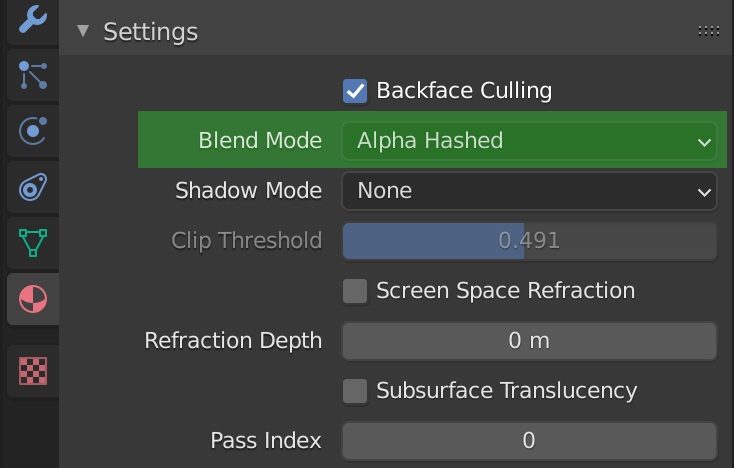
Object Constraints
For this update we introduced some new helpful constraints and supported settings for some other existing constraints.
New constraints are Limit Distance, with which you can use Clamp Region (all options), Distance, and Influence params, and Damped Track (all params supported).
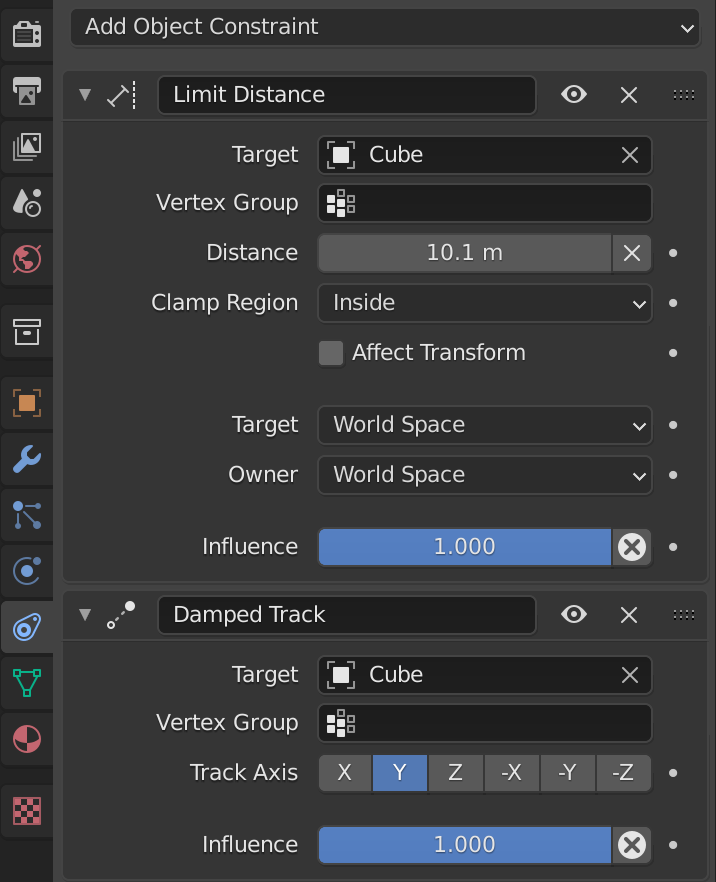
Copy Transform now offers Mix (all options) and Influence params. The Copy Rotation constraint now offers the Mix parameter (3 options – Replace, Before Original, and After Original), and also Influence.
Finally, with Copy Scale you can now use Axis, Power, Make Uniform, Offset, Additive, and Influence.
Verge3D now supports more settings for the Copy Location constraint: Axis, Invert, Offset, and Influence. Thanks for the suggestion and sorry for the delayed response.
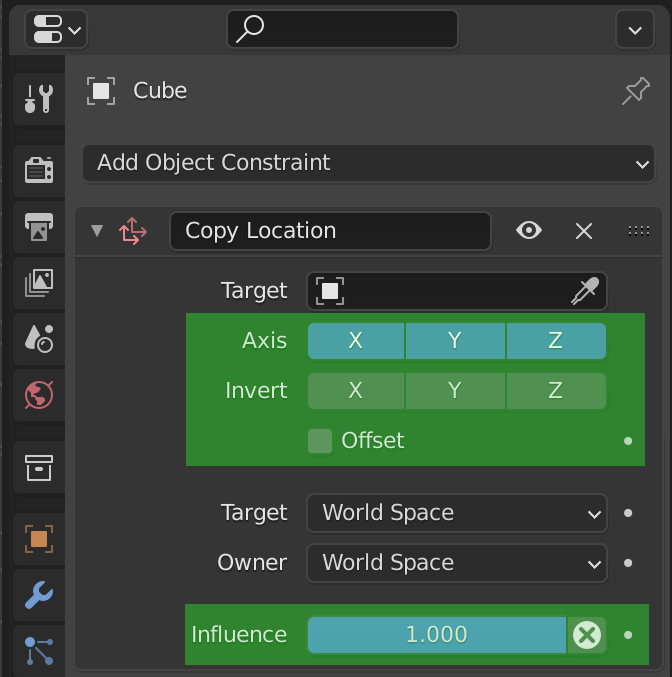
We have upgraded the Floor constraint – it now works with inclined surfaces, thanks to the Use Rotation option supported.
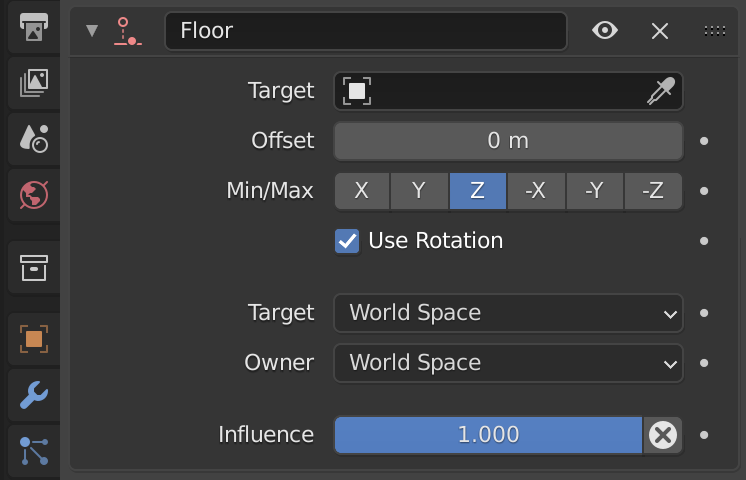
See what Blender constraints and options are available for use with Verge3D in this doc page.
More Blender-Specific Features
The node Object Info is now supported by Verge3D. With it, you can use only one material for multiple objects – e.g., using objects’ vertex colors for painting them.

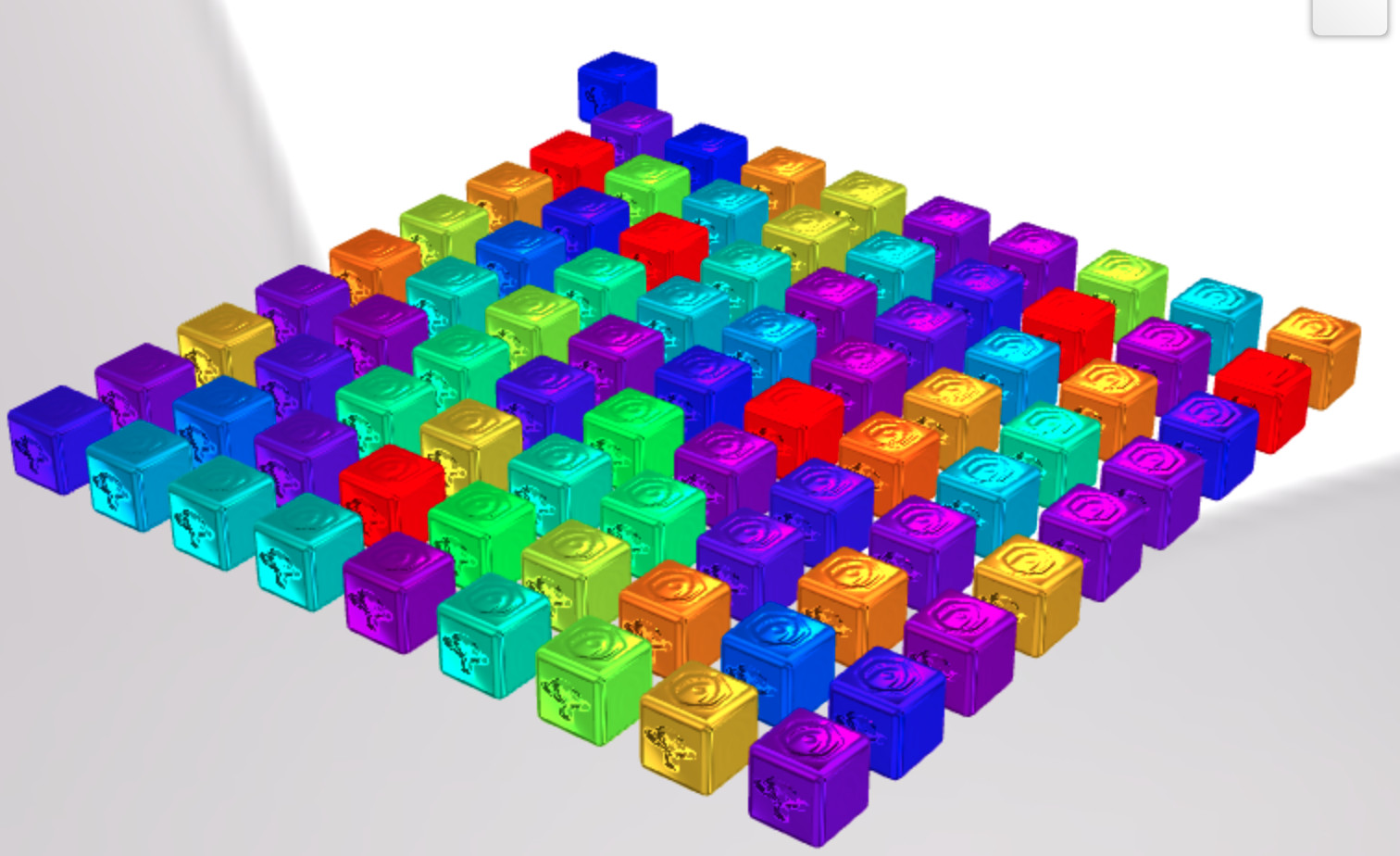
We added a new setting to the Object Properties panel, named Fix Ortho Zoom. You can use it to make your ortho camera properly work with objects parented to it, so that they don’t move when the user zooms the camera.
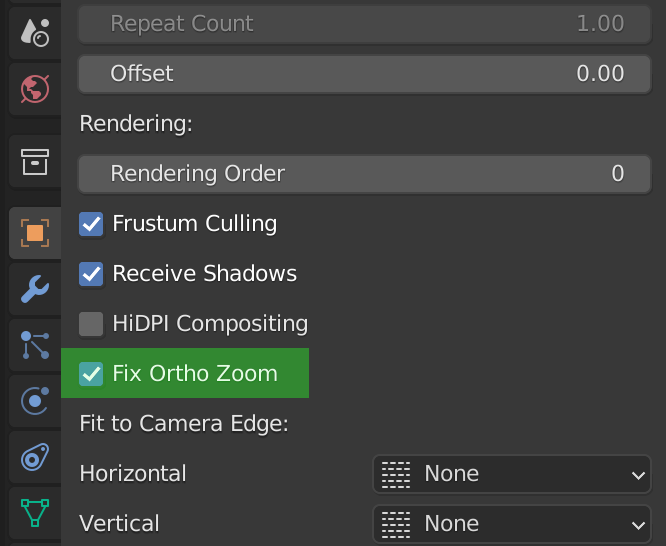
The previously introduced Clipping Planes feature obtained a new parameter – Render Side (including Front, Back, and Double-sided options). It may help for rendering complex geometry with cuts and holes.
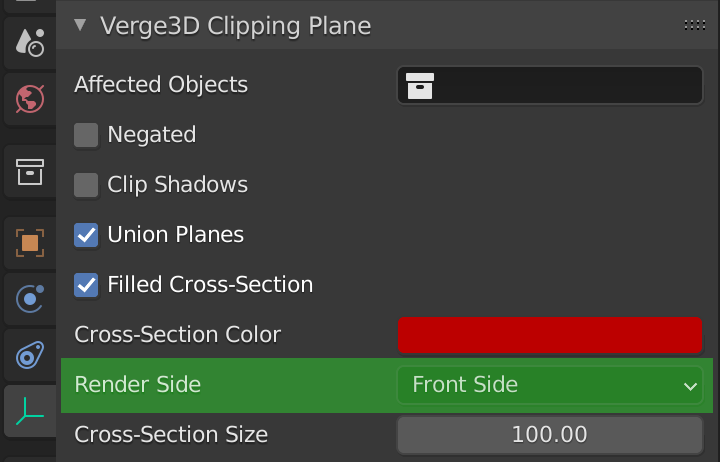
New Puzzles
New puzzle, is scene loaded, is available. You can use it to check if a particular scene has been already loaded in dynamic loading scenarios. For real usage example, please refer to the Load Unload demo.

Another new puzzle, check performance, can be used to measure rendering capabilities of the user’s computer or device. Under the hood, it uses the open source library detect GPU to quickly run a benchmark and classify the user’s GPU as “good” or “poor”.

So, you can use this puzzle’s slots to load a simpler scene, or to disable some graphically intensive features (such as post-processing effects) for poor GPUs. On the other hand – if the user’s GPU appears to be powerful – you can boost the quality up!
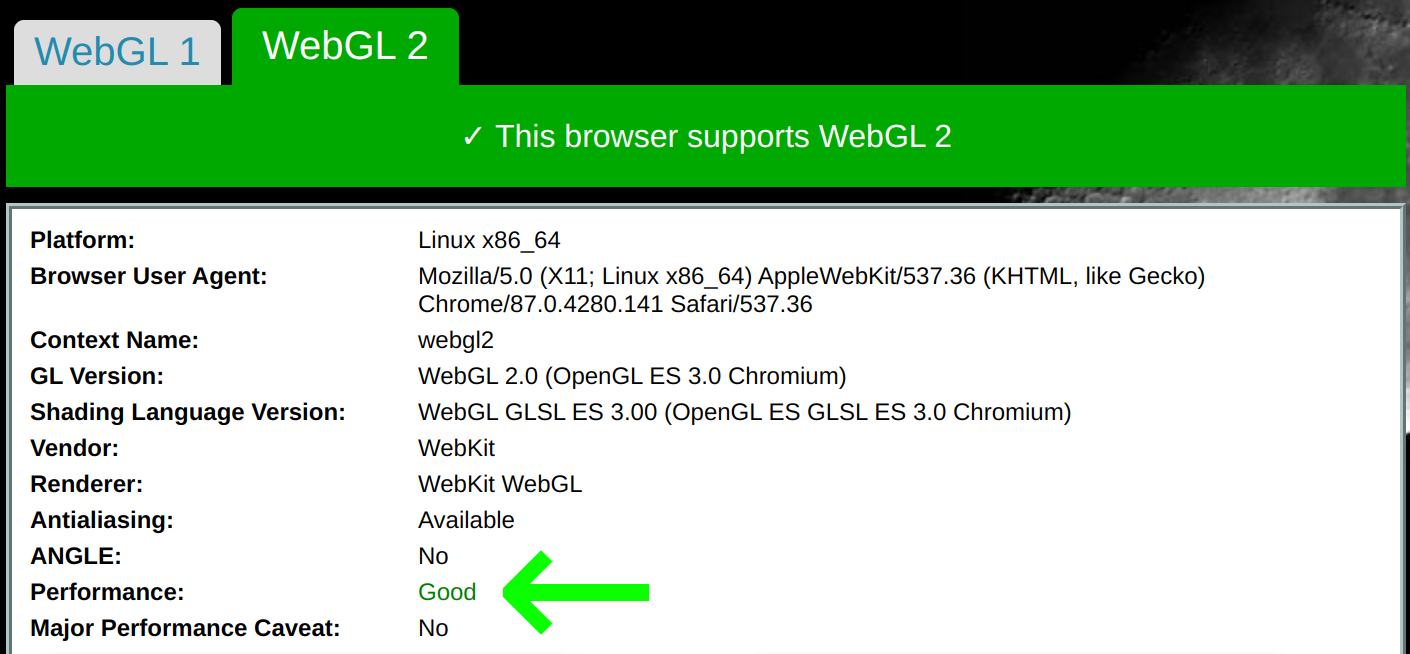
We also added this benchmark to the WebGL Report page so that you can quickly check your GPU by simply opening this page in the browser.
Updated Puzzles
The puzzles save state and undo state can now remove and create objects. Before, they could only change the objects’ state.

The puzzle get camera direction now works with ortho cameras.

We added the load option to the HTML event puzzle. Thanks for the suggestion!
The comment puzzle’s max length was increased from 50 to 120 characters.
Puzzles set transform, set object direction, and change local transform now can accept Vector (or List) inputs as well.
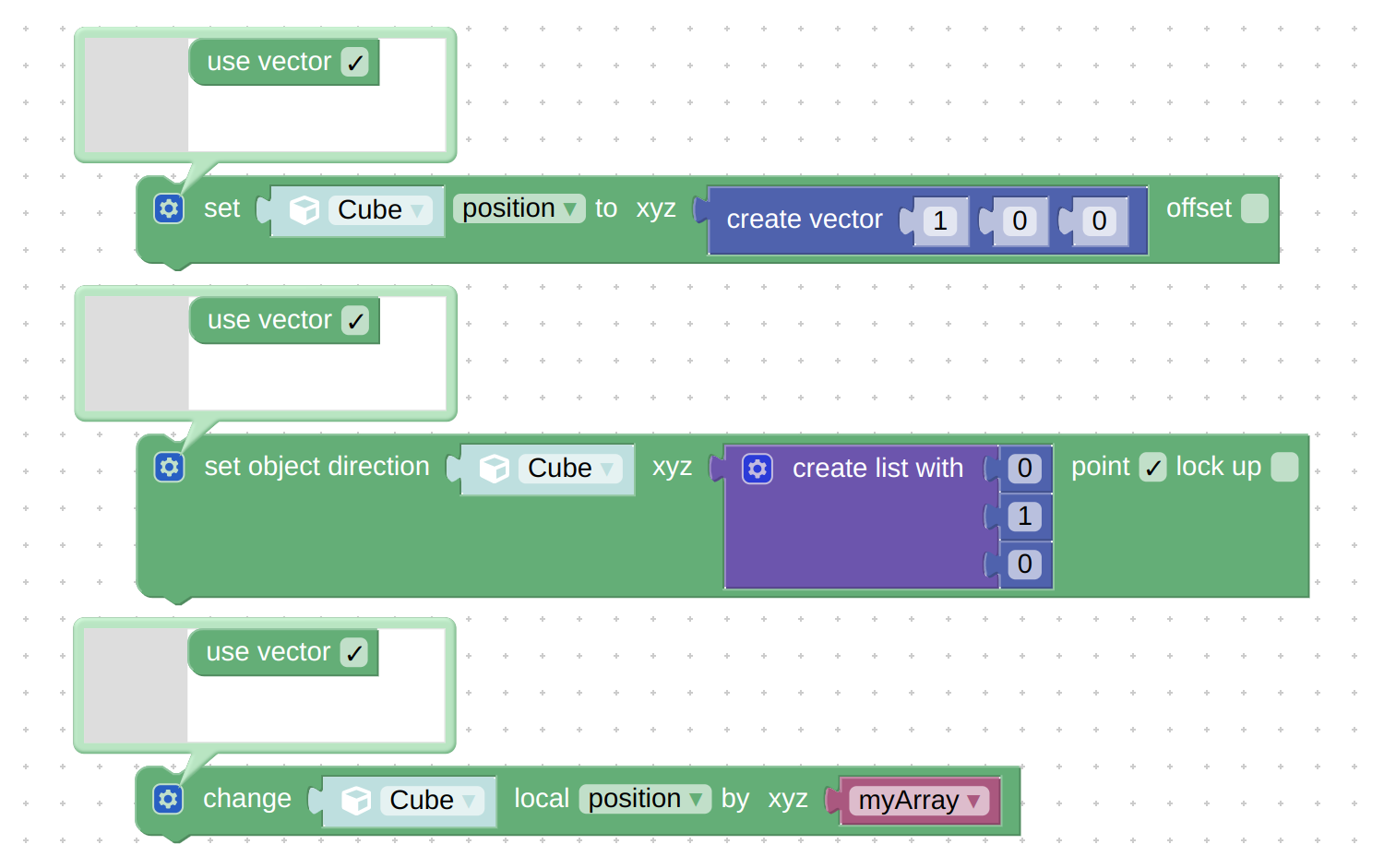
Puzzles set morph target and get morph target can now use Text inputs instead of having to select morph targets in the drop down menu. This might help implement a more procedural approach in your app by using variables.
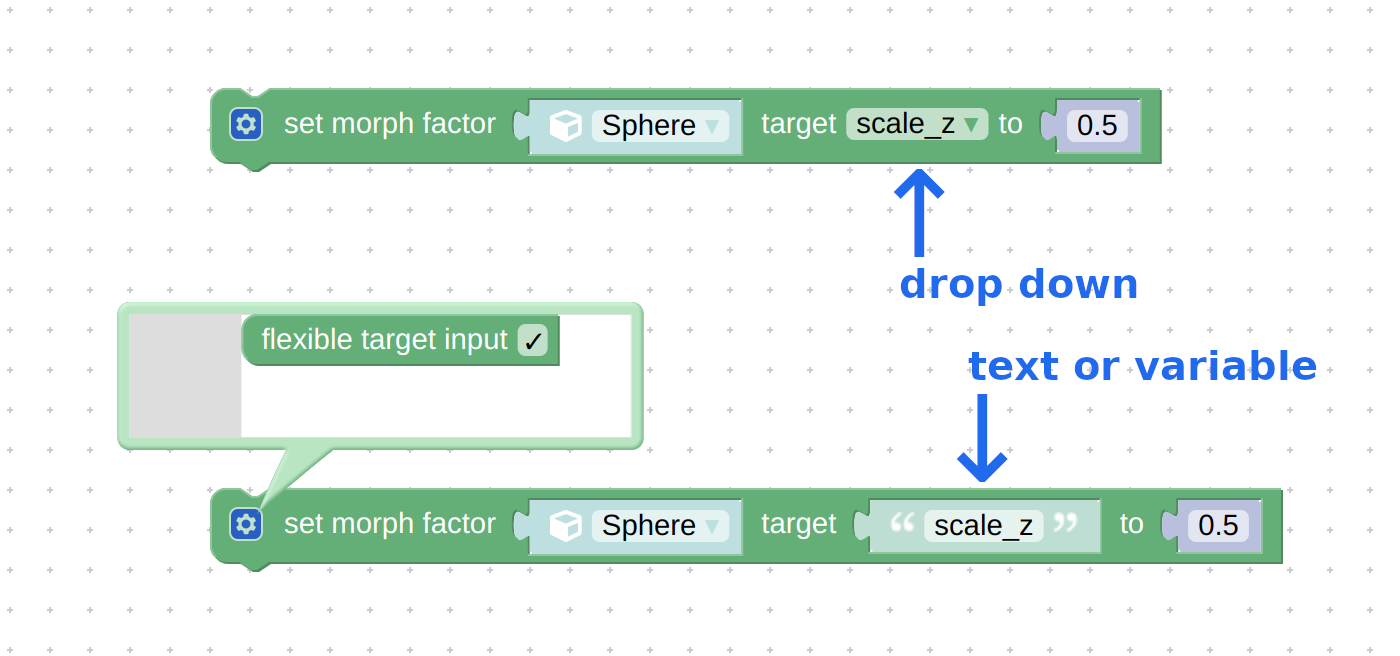
You can now enable the name field for the add annotation puzzle, thus making annotation name different from its label (useful when you have multiple annotations with the same label).

The limit constraint and copy constraint puzzles now have options distance and transform respectively.

There is a new entry in the Puzzles library – Detect Pressed / Released. This combination of puzzles might come in handy for implementing interactivity with 3D UI elements. Basically, it detects if mouse/touch is being pressed or released upon the selected object.
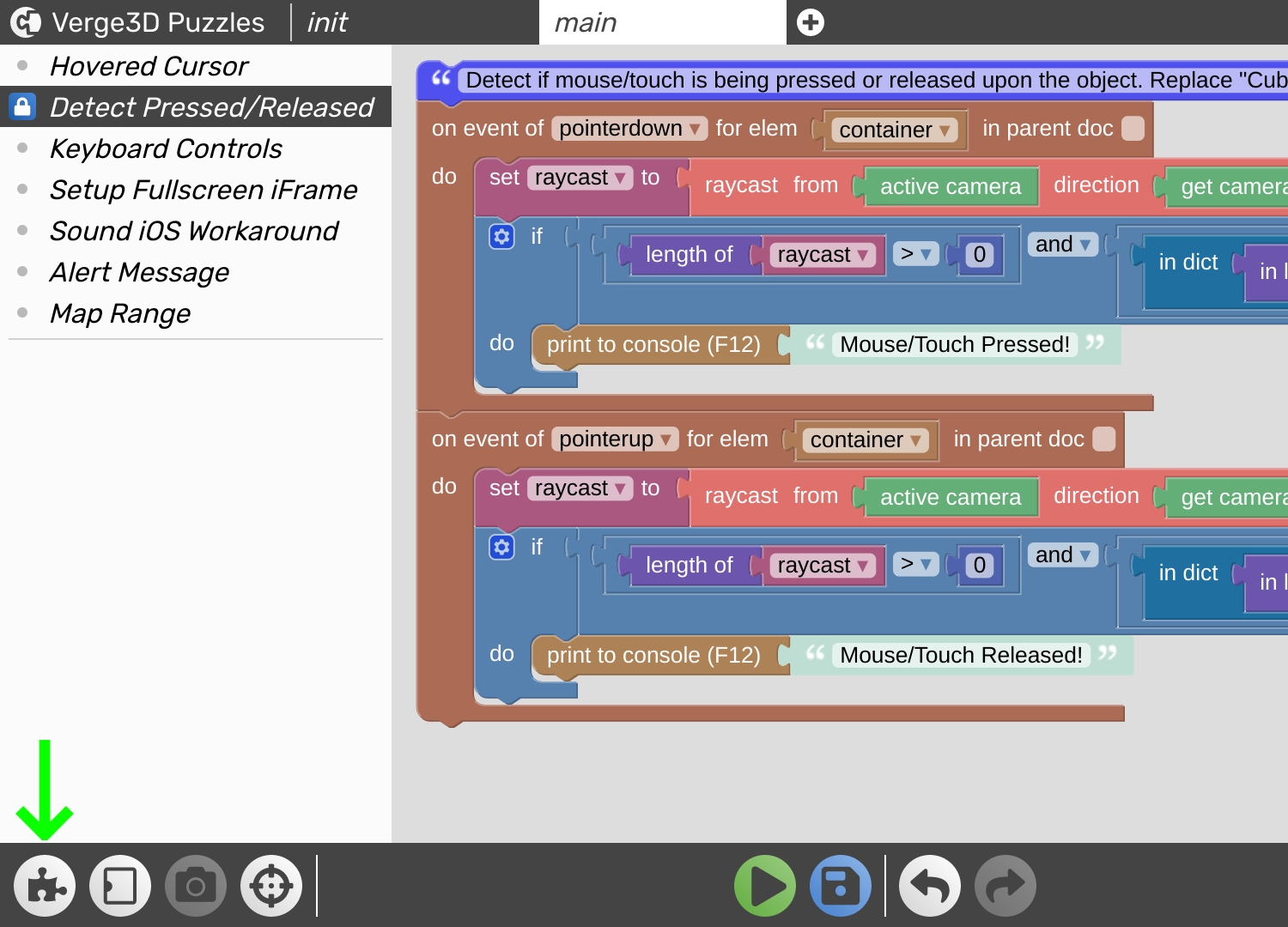
Also, some other entries in the Puzzles library were simplified and/or commented for clarity.
API Changes
We synchronized Verge3D with the underlying Three.js library (r130). Major changes in the code base include:
- JS API for multiple render targets (MRT);
- support for realistic transmission in MeshPhysicalMaterial;
- support for WebXR layers to allow compositing between AR/VR scenes;
- improved performance for multi-shader materials.
Also, all programming APIs in v3d.module.js are now class-based.
Finally, we added extensive end-to-end and unit tests for the engine code. It should improve the stability of Verge3D in the long run.
Documentation
We documented instructions on server side rendering. There were other various updates in the User Manual as well.
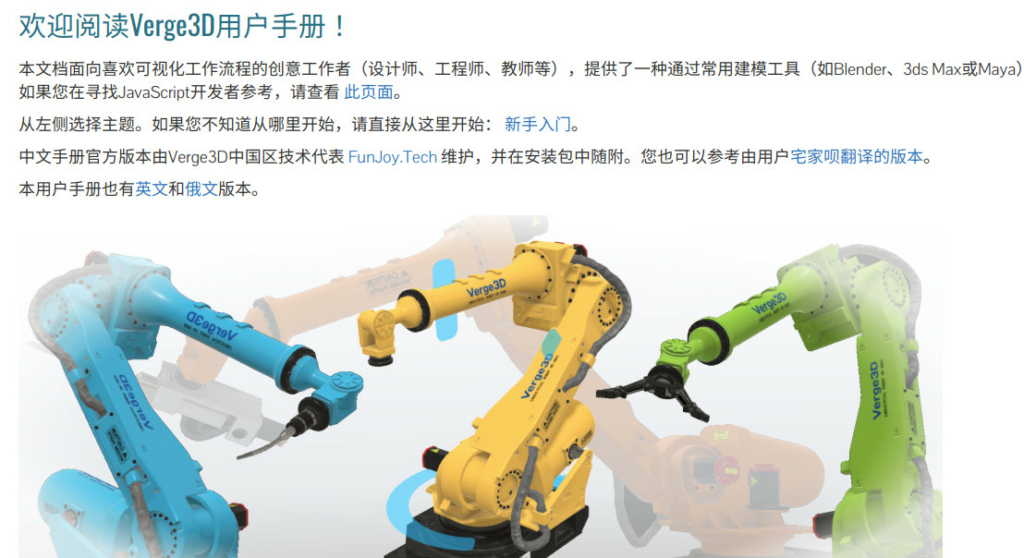
With help from our Chinese community, the User Manual has been translated to Chinese. Also the Russian version is almost ready.
Compatibility and Optimizations
We created a variant of the engine runtime specifically to support legacy browsers such as Internet Explorer 11 or Safari found on very old iPhones/iPads. The engine uses this file (v3d.legacy.js) when you select the IE11 option at the app creation screen. Please note that this runtime is rather bulky and slow. The default Verge3D build is more compact and considerably faster – and it will work with >99% of the nowadays browsers.
Please note that Microsoft officially discontinued Internet Explorer. As such, we are likely to remove IE support from Verge3D in the future.
Further, we optimized the engine performance on Intel hardware thanks to using a simplified sRGB conversion technique in WebGL shaders.
Ray casting (used in when clicked, when hovered and ray cast puzzles) now works significantly faster for batched objects (created by applying the batch geometry puzzle) thanks to using acceleration structures.
We ensured Verge3D compatibility with upcoming Windows 11, as well as with the ARM version of Windows 10. We also ensured that WebGL 2.0 system works on recently released iOS 15.
Other Improvements
Information about light probes used in the scene is now shown by the performance profile puzzle (or through P-P-P hot keys).
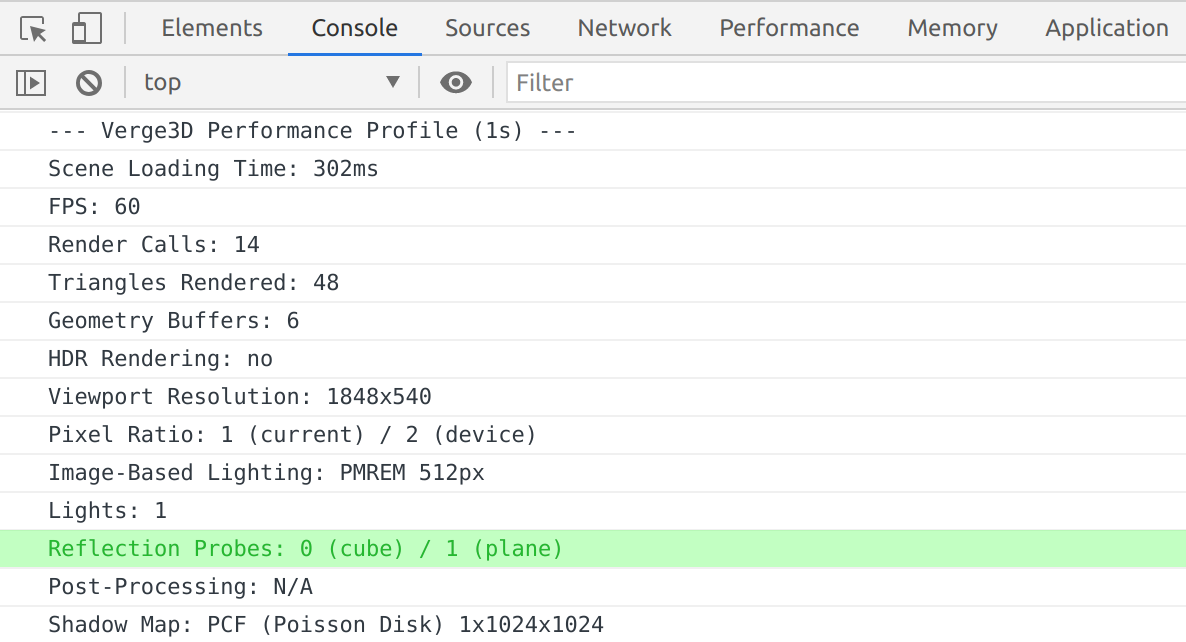
Also, the very same print performance puzzle (or P-P-P quick keys) now outputs potentially problematic issues in regard to performance (red-colored warnings). For example, on the screenshot below, the shadow map appears to be too big (4k) which may result in slower rendering.
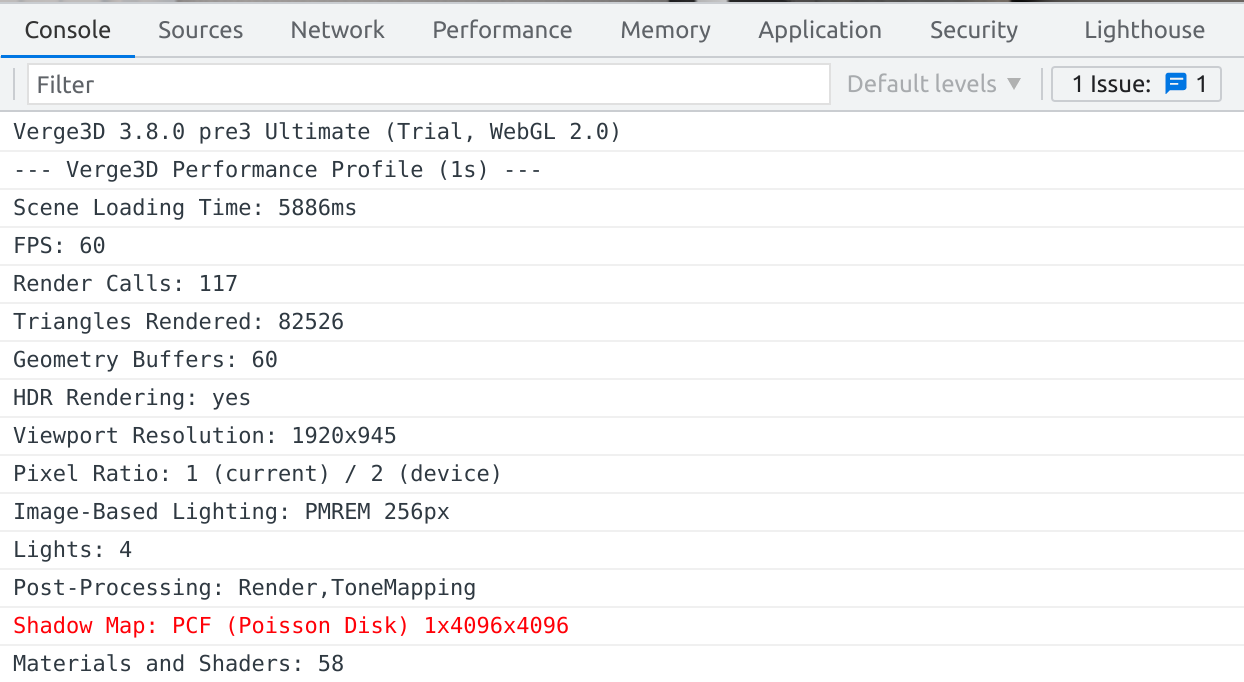
On the other topic, we improved the quality of FXAA when HDR rendering is enabled. We also improved the stability of HiDPI rendering.
Bug Fixes
- We fixed the issue with missing background when exiting the AR mode. Thanks for reporting this!
- We fixed the performance regression in download file puzzle. Thanks for the report.
- We fixed an issue with the comment puzzle that caused the Puzzles Editor to crash in some cases. Thanks for the report.
- We fixed engine crashes on older versions of iOS 11-12.
- We fixed the critical issue with recently released Safari 15 that failed to initialize WebXR. Thanks for raising this issue. On the bright side, Safari 15 implemented WebGL 2.0 – thus bringing more advanced graphics with it!
Wrap up
Get the new version of Verge3D from the downloads page! Let us know how it works for you or suggest new features for implementation on the forums. We’d be happy to hear your feedback!

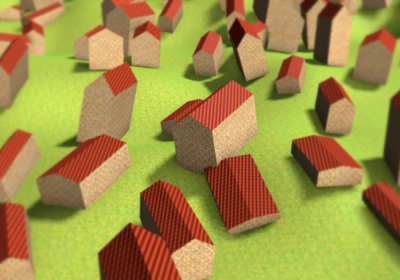
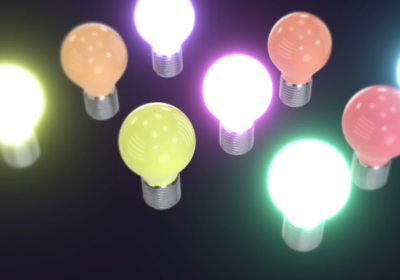
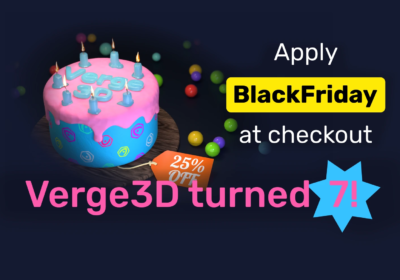
Really verge 3d is making some big changes really good update, hope to see motion blur camera in future update
thanks for the feedback!
I really hope that apple will keep on working at integrating WebXR. Augmented Reality can be a game-changer!
I also keep my fingers crossed for your guys success!
thank you so much!
nice update!
the ssao, alpha hash, and light probes should improve the visuals by a lot!